 Facebook
Facebook
 X
X
 Instagram
Instagram
 TikTok
TikTok
 Youtube
Youtube

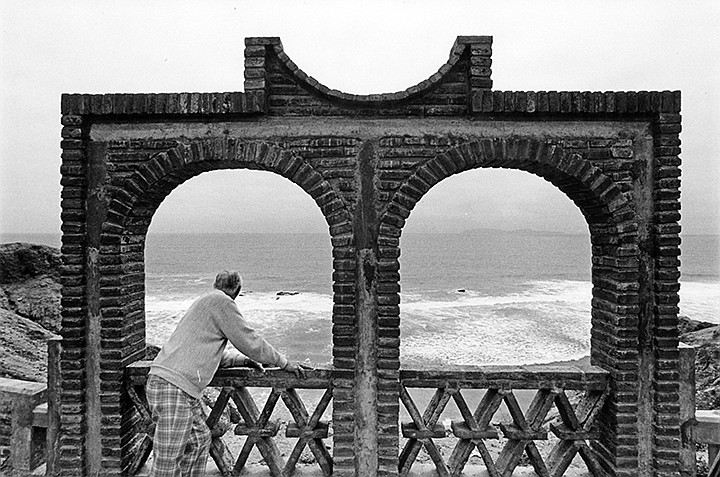
From the distance, San Antonio del Mar epitomizes a certain American concept of retirement and the good life. Tucked among the coastal cliffs of Baja approximately halfway between Tijuana and Rosarito Beach, it is an enclave of tile-roofed, sun-decked dream houses, a place where one might live out his life in quietude and peace. Offshore loom the Coronado Islands, solid on the western horizon, and early most evenings the 250 residents of San Antonio, the majority of whom are retired Americans, gaze out toward the steep rocky masses and watch the golden light fade into silver and then to black. But these evenings the talk on the verandas isn’t simply of grandchildren and guacamole recipes. When one approaches San Antonio del Mar for a closer look, one finds that much of the talk now concerns death threats, federal court cases, arrests and jailings, garbage in the streets, and carbines in the belly. Rancor has supplanted the previous tranquility of one Baja’s finest settlements.
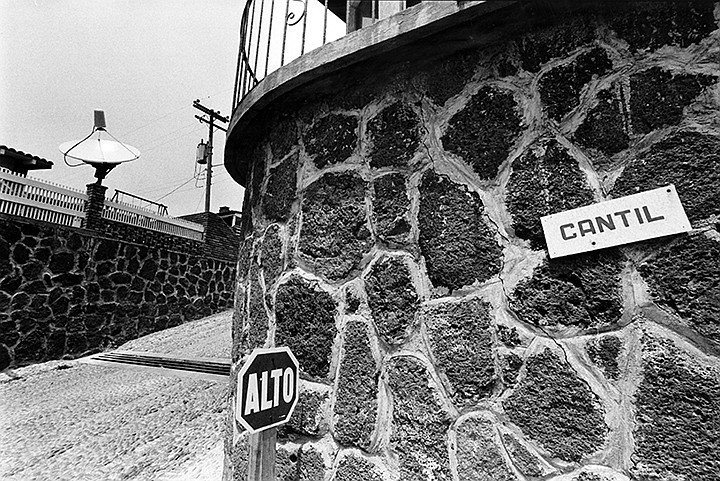
The root of these problems dates from the development’s establishment in 1968, but to most of the current residents, living was easy until last December 12. On that Wednesday, at 6:00 a.m., four carloads of federal judicial police and Tijuana municipal police pulled up to the San Antonio del Mar Homeowners Association's two offices, broke open the doors, and confiscated files, desks, typewriters, and the association’s computer and printer.
In the six months since that episode, the following incidents have occurred: three Mexicans employed by the Homeowners Association have been jailed (their terms of imprisonment ranged from one to five days); an armed guard composed of Tijuana police has replaced the half-dozen civilian watchmen who formerly monitored the grounds and the guardhouse, which stands at the entrance of the private community; the Tijuana district attorney has summoned three San Antonio residents for questioning in connection with an alleged assassination plot against the state government-appointed director of San Antonio del Mar, Rodolfo Hernandez Martinez; the Homeowners Association has filed for an injunction against Hernandez in the Tijuana federal court; Hernandez in turn has filed formal fraud charges against the Americans; and the administrator hired by the Homeowners Association to oversee maintenance of the development is in hiding, trying to avoid arrest for what he calls a trumped-up charge of theft. “We’re in a police state here,” says Curt Smith, president of the Homeowners Association, “and Hernandez is acting as the police chief.”

Rodolfo Hernandez is an outwardly friendly man with probing eyes and a quick smile, and behind his carved-wood-and-onyx desk hangs a large picture of Baja California Governor Xicotencatl Leyva Mortera. In December of 1983, “Xico” appointed Hernandez to his position as director general of San Antonio del Mar, and Hernandez doesn’t let anyone forget that. Ten years before his appointment, in 1973, the Baja state government purchased the development, after the state of California sued its initial American and Mexican developers for false advertising, and sixty-one people who had purchased lots there filed suit for fraud. As a result of those suits, the government of Baja came in as a business partner with Banco del Atlantico, setting up the first thirty-year trust agreements in that state, under which Americans can live on, but not own, Mexican soil. Each time a new governor has been elected in Baja, a new director general has been appointed at San Antonio del Mar. Rodolfo Hernandez, however, is the first one to hire a bodyguard.
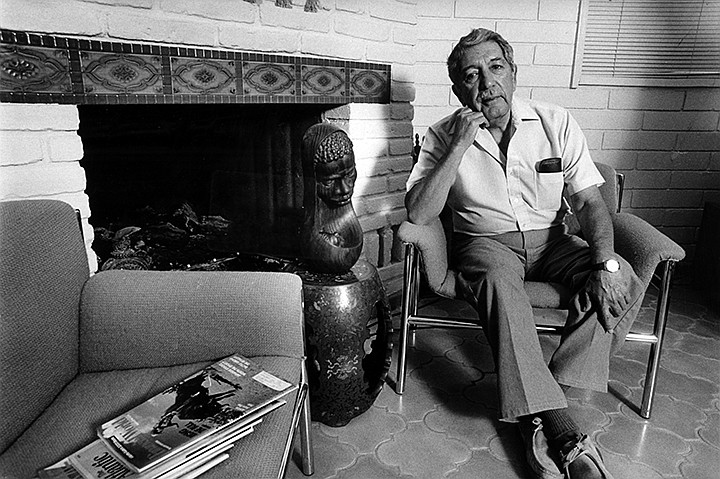
“We want to live in peace here, we don’t want problems,” Hernandez says. “Two or three Americans here are causing problems, but they are not guilty. The guilty one is Carlos Urrea. He lied to them for money.”
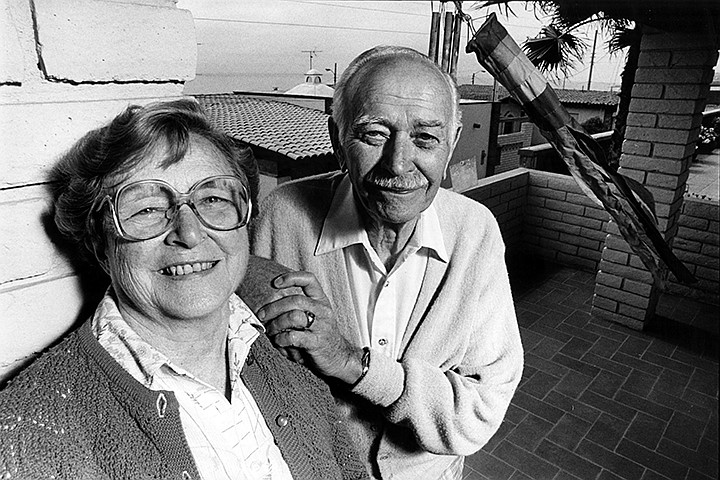
Carlos Urrea, who is thirty-four years old, was hired by the Homeowners Association in the summer of 1983, six months before Hernandez’s appointment, to administer their maintenance money, which amounted to approximately $17,000 per month, and to provide a work force of thirty men to pick up garbage, maintain street lights and roads, provide security, and supply water to the residents when the main water system broke down. Just two weeks ago an arrest warrant was issued for Urrea, charging him with the theft of a water tank from the property. Urrea and the homeowners suspect that Hernandez is illegally trying to usurp Urrea’s position as administrator of the maintenance money, and they’ve gone to court to argue that. “They’re liars, and I can prove it,” says Hernandez, who is confident that he’ll win in court by proving that the homeowners themselves have no legal right to administer the money.
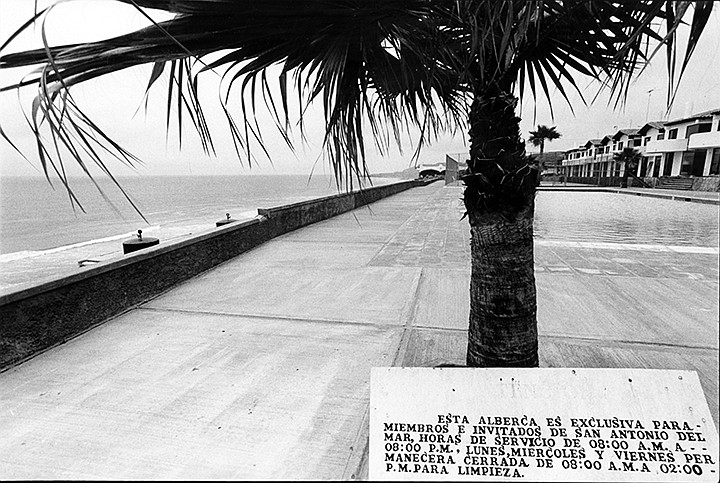
“If Hernandez is right,” asks Urrea from his hideout in Tijuana, “why doesn’t he just wait for the federal court to decide it? Why harass us? Why put me in jail, and why put two of my men in jail? Why is he abusing all his powers if he’s right? Because he knows he’s legally wrong, and he wants me to abandon the homeowners, because then they’re lost.”
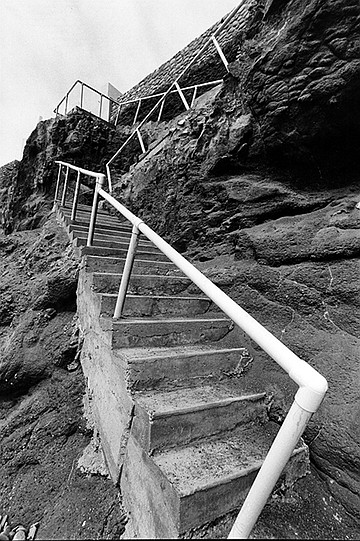
For the timid, this mess at San Antonio would be more than enough justification never to invest money south of the border. The current dispute is over the validity of the development’s covenants, conditions, and restrictions (CC&R’s), a set of operating procedures that is more or less standard in planned communities in the United States. The homeowners have believed since 1975 that the set of CC&R’s that is printed on their lease titles ultimately governs San Antonio del Mar. According to these covenants, the homeowners could take over the maintenance and general administration of the development, while the Baja government would remain as developer, builder, and lessor of property. Before 1983, the Baja state appointee, San Antonio del Mar’s director general, was also in charge of maintenance and administration, but in the summer of that year those two tasks were formally handed over to the homeowners. Now Hernandez, appointed six months after the Homeowner’s Association hired Urrea to administer its funds, is saying that the covenants are invalid because they were never registered properly with the state.
This was shattering news to the homeowners, who have copies of the 1983 amended trust agreements, signed by former Baja Governor Milton Castellanos Everardo, which include the covenants. Now some of the homeowners wonder: if Hernandez is correct, then are all the titles to their property (they own the houses but not the land), written under the amended trust of 1975, which incorporates the CC&R’s, also invalid? They eagerly await the decision of the federal judge, who is to decide specifically which documents govern San Antonio, and if those documents include CC&R’s.
“Before we took it over, the state’s people were skimming off some of the maintenance money, so there wasn’t enough to keep up with all the maintenance,” says sixty-four-year-old Bob Ronstadt, vice president of the Homeowners Association. “They didn’t keep good records, and out of 500 lots they were getting money only from about 170 people. They sent out no bills, issued no financial accounting statements. The swimming pools were in terrible shape, the tennis courts were unusable, all the drainage systems were shot. We debated whether we should take on all the problems. But then we figured we couldn’t do any worse than the state.” Now the swimming pool is fixed, the tennis courts have been resurfaced, and the drainage systems are much improved — and Rodolfo Hernandez is taking the credit for it. “We put the money up for the swimming pool and the tennis court,” insists Hernandez. “It wasn’t Association money. We did that.” Curt Smith, seventy-four-year-old association president, brands that statement “absolutely false.” And so it goes.
Maybe there’s an ancient curse left on that section of the Baja coastline by the Indians. San Antonio del Mar, nee San Antonio Shores, has been mired in financial, legal, and moral complications for almost twenty years now. It was among the first, and certainly the biggest, of the Baja land boom developments that took hold shortly after the completion of the Tijuana/Ensenada toll road in 1966. Established by Tijuana attorney Manuel Corzo Blanco and former Washington state Attorney General Donald Eastvold, San Antonio Shores was envisioned as a three-by-five mile piece of paradise. It was to include an eighteen-hole golf course, a small boat pier, its own sewage treatment plant, and as many as 8000 homes. And it was to offer a new way of living in Mexico: its inhabitants would neither buy nor lease the land. Instead, the developers purchased the land (in Corzo Blanco’s name), then transferred it to a corporation. The corporation was then transformed into a club. Under Mexican law, a chartered corporation has a life of one hundred years. Investors who put up between $5000 and $25,000 for a lot became “club members.” They were told that their “memberships” were good for one hundred years.
Unfortunately and falsely, some members were told that after a certain number of years they would gain clear title to their land. Others who had read early advertisements for the development interpreted those ads to mean they could actually purchase the property outright. This is illegal in certain parts of Mexico, including most of Baja. Article 27 of Mexico’s constitution states that no foreigner may own land within 100 kilometers of the country’s borders or within fifty kilometers of the coast. Still, by 1972 more than 3000 Americans had paid almost $15 million for lots in San Antonio Shores.
But as the development was growing larger, the questions of legality became more numerous. Some people discovered that certain lots were being sold simultaneously to different people. The California Real Estate Association, which had a natural interest in all the real estate speculators taking their money south, began to ask embarrassing questions. Soon the newspapers were writing about the thousands of Americans who were funneling money into questionable deals in Mexico. In 1970 in the Los Angeles superior court, the California attorney general filed a $25 million lawsuit, charging San Antonio’s developers with false advertising. They were barred from selling lots in California, some moneys from prior sales were impounded, and the resulting bad publicity was exceedingly damaging. By August of 1972, irate investors had filed more than fifty lawsuits in Mexican courts, charging the developers with fraud and misrepresentation.
Finally the government of Baja, which had a great need to stimulate foreign investment and to keep American greenbacks flowing south, stepped in with a solution: it would purchase all of San Antonio Shores (and eventually rename it San Antonio del Mar) and attempt to repay in full any of the investors who wanted out. Alas, the state’s good intentions exceeded its capabilities. Hundreds of original investors lost all of the money they had put up.
However, in February of 1973 Baja Governor Milton Castellanos Everardo established the first thirty-year bank trust arrangement for leasing land in Baja. At the end of the thirty years, leaseholders are obligated to sell their land to a Mexican national, but as one San Antonio resident says, “We think that’ll change, because all the trusts in Baja will end about the same time, and there aren’t enough Mexicans with enough money to take over the land.” The thirty-year trust agreement has served to stabilize foreign land investments throughout Baja; but it provided only a relatively short period of tranquility for San Antonio del Mar.
It wasn’t until 1975 that an amended trust agreement was drawn up that included covenants, conditions, and restrictions. An interim trust agreement had been put into effect earlier, one that did not include any CC&R’s. It is this agreement, dated December 13, 1974, that Rodolfo Hernandez says is still in effect. “The CC&R’s never got signed by the governor, and were never registered,” says Hernandez. But copies of the amended trust agreement provided by the residents do in fact bear Castellanos’ signature. And the Banco del Atlantico sends lessees a copy of the CC&R’s whenever a lease contract is signed.
Under provisions of the CC&R’s, the director general of San Antonio del Mar could transfer administration of the maintenance functions to the homeowners either when eighty percent of the lots were leased, or sooner, if he so chose. The previous director general, Pedro Aldrete Romandia, so chose in the spring of 1983, according to letters he signed. In July of that year the homeowners elected a supervisory committee, which immediately began looking for a Mexican national (required by the CC&R’s) whom they might hire as administrator. They found Carlos Urrea, a former Tijuana municipal police captain. Together the Americans and Urrea assumed the arduous task of tracing all the leaseholders. A resident supplied a home computer both to help keep track of everyone and to start a billing and accounting procedure for collecting monthly maintenance fees. “We started collecting $35 a month from about 425 people,” says vice president Bob Ronstadt. “And we started doing the work on the drains and the roads. People could see the improvement, so they paid the money.”
In the meantime Governor Xicotencatl Leyva Mortera was elected to replace Roberto de la Madrid in Mexicali, and Rodolfo Hernandez, former head of security at the Tijuana airport, was given the director’s job at San Antonio del Mar. For several months the residents and Hernandez worked without any serious problems. “We used to publish a monthly statement of accounts,” says Ronstadt. “Money in, money out, money in the bank. And Hernandez saw that we had $ 17,000 a month coming in sometimes. He wanted to take over the handling of it.” Ronstadt and Curt Smith say that Hernandez first attempted to do this in the spring of 1984, when a leaseholder named Charles Sefer sold his property. At Hernandez’s request, before the transaction, the homeowners determined that Sefer owed about $2000 for back maintenance fees. But, according to Ronstadt and Smith, Hernandez told Sefer the back fees were to be paid to him rather than to the Homeowners Association.
Sefer made out a check for $1,057.75 to Hernandez (the homeowners have a copy of the canceled check), who cashed it in the U.S.“We caught him with his hand in the till, see,” says Curt Smith.“He didn’t have the authority to receive that money, much less pocket it. Our attorney said it was out-and-out fraud.” When asked by a reporter what he did with that money, Hernandez says it was used to provide regular maintenance for the development.
Over the summer of 1984 the homeowners repeatedly asked about the Sefer money and about other actions undertaken by Hernandez. He had begun to build houses on unsold lots, whereas before, almost all of the lots were first leased, and the lessee built the house. But the houses Hernandez was building were in violation of the CC&R’s, according to Curt Smith. For one thing, some of the houses weren’t constructed in Spanish Colonial style, as stipulated in the CC&R’s, and many were built with new styrofoam-and-concrete walls that were not approved beforehand by the Homeowners Association design committee. And the water and electricity used during construction were usually not measured by a meter on the homesite. Smith says these unmetered utilities fees have to be paid with Association funds. “He’s stealing our water. And you can’t believe some of the crap he’s built,” huffs Smith, who retired as an aircraft designer from Lockheed Aircraft in 1967.
The homeowners also began to complain about the washed-out road at the southern end of the property. Storms in 1982 had sent torrents down a dry wash, and in addition to taking the road, at least one home had been destroyed. Smith says the repair of the road and the establishment of proper drainage is the developer’s job, and the developer is Hernandez. This, along with complaints about the inferior new houses, as well as the Sefer money, “really got Hernandez’s ire up,” says Smith. A letter from the homeowners to the governor requesting Hernandez’s removal didn't improve relations either. In the fall of last year Hernandez sent a letter to all the residents, notifying them that he was now the development's administrator, and that all maintenance fees were to be paid to him. The homeowners countered with their own letter, saying Hernandez had no authority to collect the money. Most residents began to withhold their monthly fees, waiting to see how the dispute would be resolved.
Since then the troubles have steadily escalated. Hernandez demanded proof that the Homeowners Association offices really belonged to them. Urrea, Smith, and Ronstadt all agree that the former director general turned the offices over to them when the Homeowners Association took over administration of their maintenance funds, but they have no paper certifying that. Hernandez went to state court in Tijuana and requested the release of the offices to him. A judge gave the order, and the offices were confiscated in December. “That same day we went to see the judge, and asked that our equipment and files be released to us,” says Bob Ronstadt. “It was a Judge MacGregor, and he said come back tomorrow. We came back the next day and he was on vacation.”
About a week later, in late December, resident Frank Mullen went down to the guardhouse to tell the guards on duty that if his son came by he wouldn’t to be home, but would instead be at a party the homeowners were giving for the maintenance workers. Mullen knocked a several times at the guardhouse, say Ronstadt, Smith, and Urrea (Mullen couldn’t be contacted), and then a policeman stepped out and, shoving a rifle into his stomach, told him to stop knocking. “Frank’s got a heart condition,” says Smith. “What if he’d had a heart attack right then? What do we need guns here for? We never had them before Hernandez came. This was a peaceful place, and we were one big happy family.”
In January the residents began to have problems getting their mail, which comes to a post office box in San Ysidro and is picked up there by a homeowner. Hernandez had sent change-of-address cards switching the San Antonio box to Nestor, a small community just north of San Ysidro. For several days mail was withheld from the residents, pending investigation of their claims that the change-of-address cards were “fraudulent,” since they, not Hernandez, were the rightful owners of the box. On February 14, after forty of the residents complained to the U.S. Attorney’s office, their mail was released to them, and since then there have been no problems with the San Ysidro box. But the residents have filed a formal complaint with the U.S. Postal Service, signed by forty-seven people, against Hernandez.
In March of this year police officers arrested Jesus Lopez Gutierrez, one of Urrea’s workers, for allegedly offering to kill Hernandez. He was held in jail for five days, and eventually signed a confession saying he’d made the offer to three residents and to Carlos Urrea. All four of the men were called in for questioning by Assistant District Attorney Armando Cajal. “He really put me through the third degree, pounding the desk, screaming that he could put me in jail,” says Bob Ronstadt, one of the men who was questioned. “He said the others had already confessed, and he read me the confession. I said they were liars, that no such offer was ever made.” The matter was eventually dropped, but not before Hernandez called a press conference to announce the alleged plot to murder him.
The assassination offer was supposedly made shortly after Hernandez confiscated a fire truck and a pickup from the homeowners. “The fire truck is owned by the Mexican government, not them,” explains Hernandez. “I have the papers for it, of course. The previous administrator bought that truck.”
The homeowners say the truck was given to them by the Rosarito Beach Fire Department. For the past few years the residents at San Antonio have contributed several thousand dollars to the fire department, and the homeowners say the Rosarito firefighters donated the truck for their use in case of a fire and before the firefighters could arrive. Smith says the homeowners fixed the truck, and used it sometimes to deliver water to the houses when the water system (which is linked to the desalinization plant in Rosarito) shut down. When Hernandez, backed up by the police, ordered his men to take possession of the truck, half a dozen residents blocked its path with their cars. According to Urrea, one woman even lay down in front of the towtruck that was preparing to move the cars out of the way, according to Urrea. Assistant District Attorney Armando Cajal arrived and said through a bullhorn that if the people didn’t move their cars, they’d be thrown in jail. Eventually the residents relented.
One day soon after the fire truck was taken, the water was shut off. Carlos Urrea asked his foreman, Shano, to get a second water tank that was often used to deliver water, and to start making the rounds to all the houses. But several weeks before, Shano explained, he had loaned the water tank (which was originally found in the surf and claimed by Urrea’s workers) to Hernandez’s construction crew. The tank had rolled down a hill, its valve had broken, and it had been abandoned. According to Urrea, Shano retrieved the tank and took it into Rosarito to be fixed. He brought it back and put it beside the homeowners’ makeshift office trailer, where it sits today, But the next day he was arrested for theft. “Two weeks ago they released him, but they made him sign a confession that I ordered him to steal the tank,” says Urrea. “Now they have an arrest order for me.” Urrea is staying away from his office while his attorneys “try to destroy these lies in federal court,” he explains. In the meantime, residents say Hernandez has prohibited Urrea’s fourteen workers (down from thirty last year, when the homeowners had enough money to pay them) from coming onto the property to work. Garbage is piling up. Last Tuesday, reports Curt Smith, the workers were told they could only work if they signed papers indicating they were now employed by Hernandez, not Urrea. According to Urrea, so far none have signed.
“We have a beautiful place here, and most residents are happy,” says Hernandez, who is confident the federal court will declare him the rightful administrator. “We will all be friends again when this is all over.” He smiles broadly. The next court date is June 18.



From the distance, San Antonio del Mar epitomizes a certain American concept of retirement and the good life. Tucked among the coastal cliffs of Baja approximately halfway between Tijuana and Rosarito Beach, it is an enclave of tile-roofed, sun-decked dream houses, a place where one might live out his life in quietude and peace. Offshore loom the Coronado Islands, solid on the western horizon, and early most evenings the 250 residents of San Antonio, the majority of whom are retired Americans, gaze out toward the steep rocky masses and watch the golden light fade into silver and then to black. But these evenings the talk on the verandas isn’t simply of grandchildren and guacamole recipes. When one approaches San Antonio del Mar for a closer look, one finds that much of the talk now concerns death threats, federal court cases, arrests and jailings, garbage in the streets, and carbines in the belly. Rancor has supplanted the previous tranquility of one Baja’s finest settlements.

The root of these problems dates from the development’s establishment in 1968, but to most of the current residents, living was easy until last December 12. On that Wednesday, at 6:00 a.m., four carloads of federal judicial police and Tijuana municipal police pulled up to the San Antonio del Mar Homeowners Association's two offices, broke open the doors, and confiscated files, desks, typewriters, and the association’s computer and printer.
In the six months since that episode, the following incidents have occurred: three Mexicans employed by the Homeowners Association have been jailed (their terms of imprisonment ranged from one to five days); an armed guard composed of Tijuana police has replaced the half-dozen civilian watchmen who formerly monitored the grounds and the guardhouse, which stands at the entrance of the private community; the Tijuana district attorney has summoned three San Antonio residents for questioning in connection with an alleged assassination plot against the state government-appointed director of San Antonio del Mar, Rodolfo Hernandez Martinez; the Homeowners Association has filed for an injunction against Hernandez in the Tijuana federal court; Hernandez in turn has filed formal fraud charges against the Americans; and the administrator hired by the Homeowners Association to oversee maintenance of the development is in hiding, trying to avoid arrest for what he calls a trumped-up charge of theft. “We’re in a police state here,” says Curt Smith, president of the Homeowners Association, “and Hernandez is acting as the police chief.”

Rodolfo Hernandez is an outwardly friendly man with probing eyes and a quick smile, and behind his carved-wood-and-onyx desk hangs a large picture of Baja California Governor Xicotencatl Leyva Mortera. In December of 1983, “Xico” appointed Hernandez to his position as director general of San Antonio del Mar, and Hernandez doesn’t let anyone forget that. Ten years before his appointment, in 1973, the Baja state government purchased the development, after the state of California sued its initial American and Mexican developers for false advertising, and sixty-one people who had purchased lots there filed suit for fraud. As a result of those suits, the government of Baja came in as a business partner with Banco del Atlantico, setting up the first thirty-year trust agreements in that state, under which Americans can live on, but not own, Mexican soil. Each time a new governor has been elected in Baja, a new director general has been appointed at San Antonio del Mar. Rodolfo Hernandez, however, is the first one to hire a bodyguard.

“We want to live in peace here, we don’t want problems,” Hernandez says. “Two or three Americans here are causing problems, but they are not guilty. The guilty one is Carlos Urrea. He lied to them for money.”

Carlos Urrea, who is thirty-four years old, was hired by the Homeowners Association in the summer of 1983, six months before Hernandez’s appointment, to administer their maintenance money, which amounted to approximately $17,000 per month, and to provide a work force of thirty men to pick up garbage, maintain street lights and roads, provide security, and supply water to the residents when the main water system broke down. Just two weeks ago an arrest warrant was issued for Urrea, charging him with the theft of a water tank from the property. Urrea and the homeowners suspect that Hernandez is illegally trying to usurp Urrea’s position as administrator of the maintenance money, and they’ve gone to court to argue that. “They’re liars, and I can prove it,” says Hernandez, who is confident that he’ll win in court by proving that the homeowners themselves have no legal right to administer the money.

“If Hernandez is right,” asks Urrea from his hideout in Tijuana, “why doesn’t he just wait for the federal court to decide it? Why harass us? Why put me in jail, and why put two of my men in jail? Why is he abusing all his powers if he’s right? Because he knows he’s legally wrong, and he wants me to abandon the homeowners, because then they’re lost.”

For the timid, this mess at San Antonio would be more than enough justification never to invest money south of the border. The current dispute is over the validity of the development’s covenants, conditions, and restrictions (CC&R’s), a set of operating procedures that is more or less standard in planned communities in the United States. The homeowners have believed since 1975 that the set of CC&R’s that is printed on their lease titles ultimately governs San Antonio del Mar. According to these covenants, the homeowners could take over the maintenance and general administration of the development, while the Baja government would remain as developer, builder, and lessor of property. Before 1983, the Baja state appointee, San Antonio del Mar’s director general, was also in charge of maintenance and administration, but in the summer of that year those two tasks were formally handed over to the homeowners. Now Hernandez, appointed six months after the Homeowner’s Association hired Urrea to administer its funds, is saying that the covenants are invalid because they were never registered properly with the state.
This was shattering news to the homeowners, who have copies of the 1983 amended trust agreements, signed by former Baja Governor Milton Castellanos Everardo, which include the covenants. Now some of the homeowners wonder: if Hernandez is correct, then are all the titles to their property (they own the houses but not the land), written under the amended trust of 1975, which incorporates the CC&R’s, also invalid? They eagerly await the decision of the federal judge, who is to decide specifically which documents govern San Antonio, and if those documents include CC&R’s.
“Before we took it over, the state’s people were skimming off some of the maintenance money, so there wasn’t enough to keep up with all the maintenance,” says sixty-four-year-old Bob Ronstadt, vice president of the Homeowners Association. “They didn’t keep good records, and out of 500 lots they were getting money only from about 170 people. They sent out no bills, issued no financial accounting statements. The swimming pools were in terrible shape, the tennis courts were unusable, all the drainage systems were shot. We debated whether we should take on all the problems. But then we figured we couldn’t do any worse than the state.” Now the swimming pool is fixed, the tennis courts have been resurfaced, and the drainage systems are much improved — and Rodolfo Hernandez is taking the credit for it. “We put the money up for the swimming pool and the tennis court,” insists Hernandez. “It wasn’t Association money. We did that.” Curt Smith, seventy-four-year-old association president, brands that statement “absolutely false.” And so it goes.
Maybe there’s an ancient curse left on that section of the Baja coastline by the Indians. San Antonio del Mar, nee San Antonio Shores, has been mired in financial, legal, and moral complications for almost twenty years now. It was among the first, and certainly the biggest, of the Baja land boom developments that took hold shortly after the completion of the Tijuana/Ensenada toll road in 1966. Established by Tijuana attorney Manuel Corzo Blanco and former Washington state Attorney General Donald Eastvold, San Antonio Shores was envisioned as a three-by-five mile piece of paradise. It was to include an eighteen-hole golf course, a small boat pier, its own sewage treatment plant, and as many as 8000 homes. And it was to offer a new way of living in Mexico: its inhabitants would neither buy nor lease the land. Instead, the developers purchased the land (in Corzo Blanco’s name), then transferred it to a corporation. The corporation was then transformed into a club. Under Mexican law, a chartered corporation has a life of one hundred years. Investors who put up between $5000 and $25,000 for a lot became “club members.” They were told that their “memberships” were good for one hundred years.
Unfortunately and falsely, some members were told that after a certain number of years they would gain clear title to their land. Others who had read early advertisements for the development interpreted those ads to mean they could actually purchase the property outright. This is illegal in certain parts of Mexico, including most of Baja. Article 27 of Mexico’s constitution states that no foreigner may own land within 100 kilometers of the country’s borders or within fifty kilometers of the coast. Still, by 1972 more than 3000 Americans had paid almost $15 million for lots in San Antonio Shores.
But as the development was growing larger, the questions of legality became more numerous. Some people discovered that certain lots were being sold simultaneously to different people. The California Real Estate Association, which had a natural interest in all the real estate speculators taking their money south, began to ask embarrassing questions. Soon the newspapers were writing about the thousands of Americans who were funneling money into questionable deals in Mexico. In 1970 in the Los Angeles superior court, the California attorney general filed a $25 million lawsuit, charging San Antonio’s developers with false advertising. They were barred from selling lots in California, some moneys from prior sales were impounded, and the resulting bad publicity was exceedingly damaging. By August of 1972, irate investors had filed more than fifty lawsuits in Mexican courts, charging the developers with fraud and misrepresentation.
Finally the government of Baja, which had a great need to stimulate foreign investment and to keep American greenbacks flowing south, stepped in with a solution: it would purchase all of San Antonio Shores (and eventually rename it San Antonio del Mar) and attempt to repay in full any of the investors who wanted out. Alas, the state’s good intentions exceeded its capabilities. Hundreds of original investors lost all of the money they had put up.
However, in February of 1973 Baja Governor Milton Castellanos Everardo established the first thirty-year bank trust arrangement for leasing land in Baja. At the end of the thirty years, leaseholders are obligated to sell their land to a Mexican national, but as one San Antonio resident says, “We think that’ll change, because all the trusts in Baja will end about the same time, and there aren’t enough Mexicans with enough money to take over the land.” The thirty-year trust agreement has served to stabilize foreign land investments throughout Baja; but it provided only a relatively short period of tranquility for San Antonio del Mar.
It wasn’t until 1975 that an amended trust agreement was drawn up that included covenants, conditions, and restrictions. An interim trust agreement had been put into effect earlier, one that did not include any CC&R’s. It is this agreement, dated December 13, 1974, that Rodolfo Hernandez says is still in effect. “The CC&R’s never got signed by the governor, and were never registered,” says Hernandez. But copies of the amended trust agreement provided by the residents do in fact bear Castellanos’ signature. And the Banco del Atlantico sends lessees a copy of the CC&R’s whenever a lease contract is signed.
Under provisions of the CC&R’s, the director general of San Antonio del Mar could transfer administration of the maintenance functions to the homeowners either when eighty percent of the lots were leased, or sooner, if he so chose. The previous director general, Pedro Aldrete Romandia, so chose in the spring of 1983, according to letters he signed. In July of that year the homeowners elected a supervisory committee, which immediately began looking for a Mexican national (required by the CC&R’s) whom they might hire as administrator. They found Carlos Urrea, a former Tijuana municipal police captain. Together the Americans and Urrea assumed the arduous task of tracing all the leaseholders. A resident supplied a home computer both to help keep track of everyone and to start a billing and accounting procedure for collecting monthly maintenance fees. “We started collecting $35 a month from about 425 people,” says vice president Bob Ronstadt. “And we started doing the work on the drains and the roads. People could see the improvement, so they paid the money.”
In the meantime Governor Xicotencatl Leyva Mortera was elected to replace Roberto de la Madrid in Mexicali, and Rodolfo Hernandez, former head of security at the Tijuana airport, was given the director’s job at San Antonio del Mar. For several months the residents and Hernandez worked without any serious problems. “We used to publish a monthly statement of accounts,” says Ronstadt. “Money in, money out, money in the bank. And Hernandez saw that we had $ 17,000 a month coming in sometimes. He wanted to take over the handling of it.” Ronstadt and Curt Smith say that Hernandez first attempted to do this in the spring of 1984, when a leaseholder named Charles Sefer sold his property. At Hernandez’s request, before the transaction, the homeowners determined that Sefer owed about $2000 for back maintenance fees. But, according to Ronstadt and Smith, Hernandez told Sefer the back fees were to be paid to him rather than to the Homeowners Association.
Sefer made out a check for $1,057.75 to Hernandez (the homeowners have a copy of the canceled check), who cashed it in the U.S.“We caught him with his hand in the till, see,” says Curt Smith.“He didn’t have the authority to receive that money, much less pocket it. Our attorney said it was out-and-out fraud.” When asked by a reporter what he did with that money, Hernandez says it was used to provide regular maintenance for the development.
Over the summer of 1984 the homeowners repeatedly asked about the Sefer money and about other actions undertaken by Hernandez. He had begun to build houses on unsold lots, whereas before, almost all of the lots were first leased, and the lessee built the house. But the houses Hernandez was building were in violation of the CC&R’s, according to Curt Smith. For one thing, some of the houses weren’t constructed in Spanish Colonial style, as stipulated in the CC&R’s, and many were built with new styrofoam-and-concrete walls that were not approved beforehand by the Homeowners Association design committee. And the water and electricity used during construction were usually not measured by a meter on the homesite. Smith says these unmetered utilities fees have to be paid with Association funds. “He’s stealing our water. And you can’t believe some of the crap he’s built,” huffs Smith, who retired as an aircraft designer from Lockheed Aircraft in 1967.
The homeowners also began to complain about the washed-out road at the southern end of the property. Storms in 1982 had sent torrents down a dry wash, and in addition to taking the road, at least one home had been destroyed. Smith says the repair of the road and the establishment of proper drainage is the developer’s job, and the developer is Hernandez. This, along with complaints about the inferior new houses, as well as the Sefer money, “really got Hernandez’s ire up,” says Smith. A letter from the homeowners to the governor requesting Hernandez’s removal didn't improve relations either. In the fall of last year Hernandez sent a letter to all the residents, notifying them that he was now the development's administrator, and that all maintenance fees were to be paid to him. The homeowners countered with their own letter, saying Hernandez had no authority to collect the money. Most residents began to withhold their monthly fees, waiting to see how the dispute would be resolved.
Since then the troubles have steadily escalated. Hernandez demanded proof that the Homeowners Association offices really belonged to them. Urrea, Smith, and Ronstadt all agree that the former director general turned the offices over to them when the Homeowners Association took over administration of their maintenance funds, but they have no paper certifying that. Hernandez went to state court in Tijuana and requested the release of the offices to him. A judge gave the order, and the offices were confiscated in December. “That same day we went to see the judge, and asked that our equipment and files be released to us,” says Bob Ronstadt. “It was a Judge MacGregor, and he said come back tomorrow. We came back the next day and he was on vacation.”
About a week later, in late December, resident Frank Mullen went down to the guardhouse to tell the guards on duty that if his son came by he wouldn’t to be home, but would instead be at a party the homeowners were giving for the maintenance workers. Mullen knocked a several times at the guardhouse, say Ronstadt, Smith, and Urrea (Mullen couldn’t be contacted), and then a policeman stepped out and, shoving a rifle into his stomach, told him to stop knocking. “Frank’s got a heart condition,” says Smith. “What if he’d had a heart attack right then? What do we need guns here for? We never had them before Hernandez came. This was a peaceful place, and we were one big happy family.”
In January the residents began to have problems getting their mail, which comes to a post office box in San Ysidro and is picked up there by a homeowner. Hernandez had sent change-of-address cards switching the San Antonio box to Nestor, a small community just north of San Ysidro. For several days mail was withheld from the residents, pending investigation of their claims that the change-of-address cards were “fraudulent,” since they, not Hernandez, were the rightful owners of the box. On February 14, after forty of the residents complained to the U.S. Attorney’s office, their mail was released to them, and since then there have been no problems with the San Ysidro box. But the residents have filed a formal complaint with the U.S. Postal Service, signed by forty-seven people, against Hernandez.
In March of this year police officers arrested Jesus Lopez Gutierrez, one of Urrea’s workers, for allegedly offering to kill Hernandez. He was held in jail for five days, and eventually signed a confession saying he’d made the offer to three residents and to Carlos Urrea. All four of the men were called in for questioning by Assistant District Attorney Armando Cajal. “He really put me through the third degree, pounding the desk, screaming that he could put me in jail,” says Bob Ronstadt, one of the men who was questioned. “He said the others had already confessed, and he read me the confession. I said they were liars, that no such offer was ever made.” The matter was eventually dropped, but not before Hernandez called a press conference to announce the alleged plot to murder him.
The assassination offer was supposedly made shortly after Hernandez confiscated a fire truck and a pickup from the homeowners. “The fire truck is owned by the Mexican government, not them,” explains Hernandez. “I have the papers for it, of course. The previous administrator bought that truck.”
The homeowners say the truck was given to them by the Rosarito Beach Fire Department. For the past few years the residents at San Antonio have contributed several thousand dollars to the fire department, and the homeowners say the Rosarito firefighters donated the truck for their use in case of a fire and before the firefighters could arrive. Smith says the homeowners fixed the truck, and used it sometimes to deliver water to the houses when the water system (which is linked to the desalinization plant in Rosarito) shut down. When Hernandez, backed up by the police, ordered his men to take possession of the truck, half a dozen residents blocked its path with their cars. According to Urrea, one woman even lay down in front of the towtruck that was preparing to move the cars out of the way, according to Urrea. Assistant District Attorney Armando Cajal arrived and said through a bullhorn that if the people didn’t move their cars, they’d be thrown in jail. Eventually the residents relented.
One day soon after the fire truck was taken, the water was shut off. Carlos Urrea asked his foreman, Shano, to get a second water tank that was often used to deliver water, and to start making the rounds to all the houses. But several weeks before, Shano explained, he had loaned the water tank (which was originally found in the surf and claimed by Urrea’s workers) to Hernandez’s construction crew. The tank had rolled down a hill, its valve had broken, and it had been abandoned. According to Urrea, Shano retrieved the tank and took it into Rosarito to be fixed. He brought it back and put it beside the homeowners’ makeshift office trailer, where it sits today, But the next day he was arrested for theft. “Two weeks ago they released him, but they made him sign a confession that I ordered him to steal the tank,” says Urrea. “Now they have an arrest order for me.” Urrea is staying away from his office while his attorneys “try to destroy these lies in federal court,” he explains. In the meantime, residents say Hernandez has prohibited Urrea’s fourteen workers (down from thirty last year, when the homeowners had enough money to pay them) from coming onto the property to work. Garbage is piling up. Last Tuesday, reports Curt Smith, the workers were told they could only work if they signed papers indicating they were now employed by Hernandez, not Urrea. According to Urrea, so far none have signed.
“We have a beautiful place here, and most residents are happy,” says Hernandez, who is confident the federal court will declare him the rightful administrator. “We will all be friends again when this is all over.” He smiles broadly. The next court date is June 18.
Comments